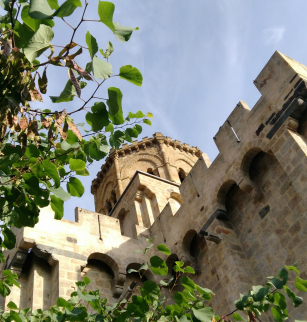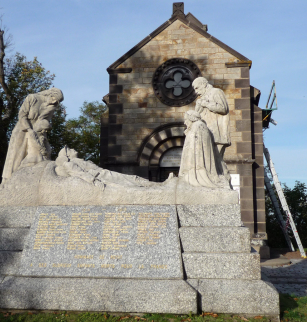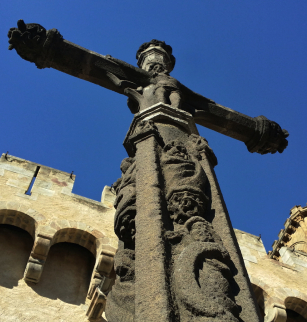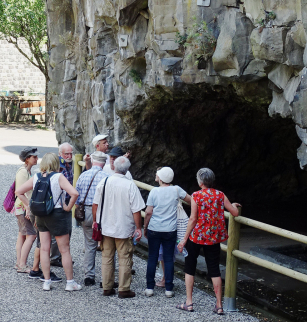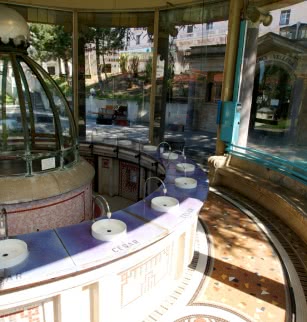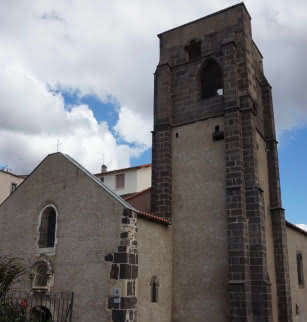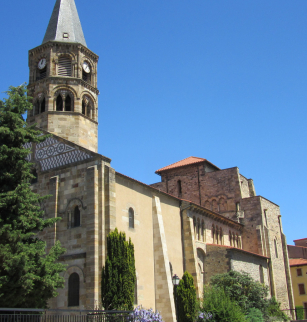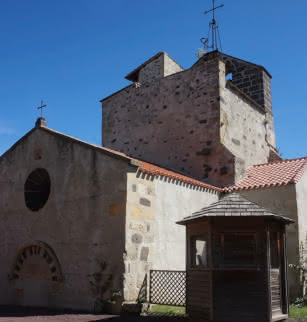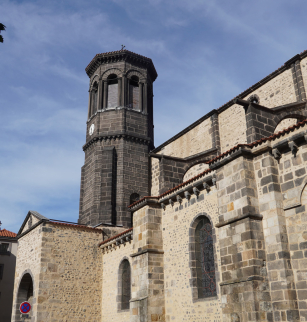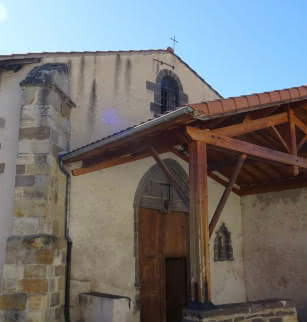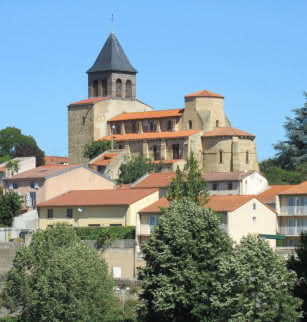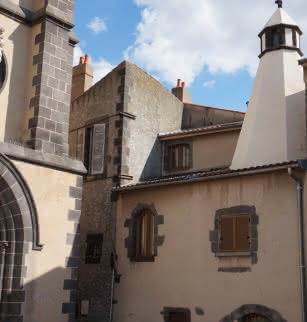Vestingkerk: Saint-Léger

De kerk Saint-Léger, die op de monumentenlijst staat, is een gebouw uit de 12e eeuw waar de oude stad Royat omheen is gebouwd.
Royat is a town with two faces: the old village structured around the Église Saint-Léger, overlooking the Tiretaine valley and the spa town located at the outlet of the same valley.
In the 7th century, Count Genesius and his wife Hélidia founded a monastery for women in Royat. In 1095, at the occasion of Pope Urban II’s visit to Clermont, the monastery was placed under the control of the Abbaye de Mozac, itself under the control of the Abbaye de Cluny in Bourgogne. Until the 14th century, Royat belonged to three lords: the Count of Auvergne, the de Royac family and the prior elected by his peers in Mozac. From the 14th century and until the French revolution, the prior remained the only lord of Royat.
Built from arkose, the Église Saint-Léger dates back to the late 12th century and the early 13th century. It is characterised by a Latin cross floor plan, a single nave, a raised choir and a flat apse built on a crypt. The church and its adjacent priory were fortified between 1169 and 1212, the period of the troubles caused by the conflict between the counts of Auvergne and the kings of France. The church still has a round path. The belfry, levelled on the orders of Couthon (1793-1794), was rebuilt in the middle of the 19th century. The church underwent two restoration campaigns, at the end of the 19th century by Aymon Mallay, departmental architect for the Puy-de-Dôme region from 1851 to 1883, and in the early 21st century. It was listed as a historic monument in 1862.
On the inside, a tomb stone (10th century) can be found in the vestibule. The capitals in the crypt date from the11th century and those in the nave from the 12th century. The only storied capital in the nave tells the tale of Ezekial cutting his beard and hair on God’s orders.
Uitrusting en diensten
| Voorzieningen : | Parkeerterrein in de buurt |
|---|
Tarieven
- Gratis toegang.






